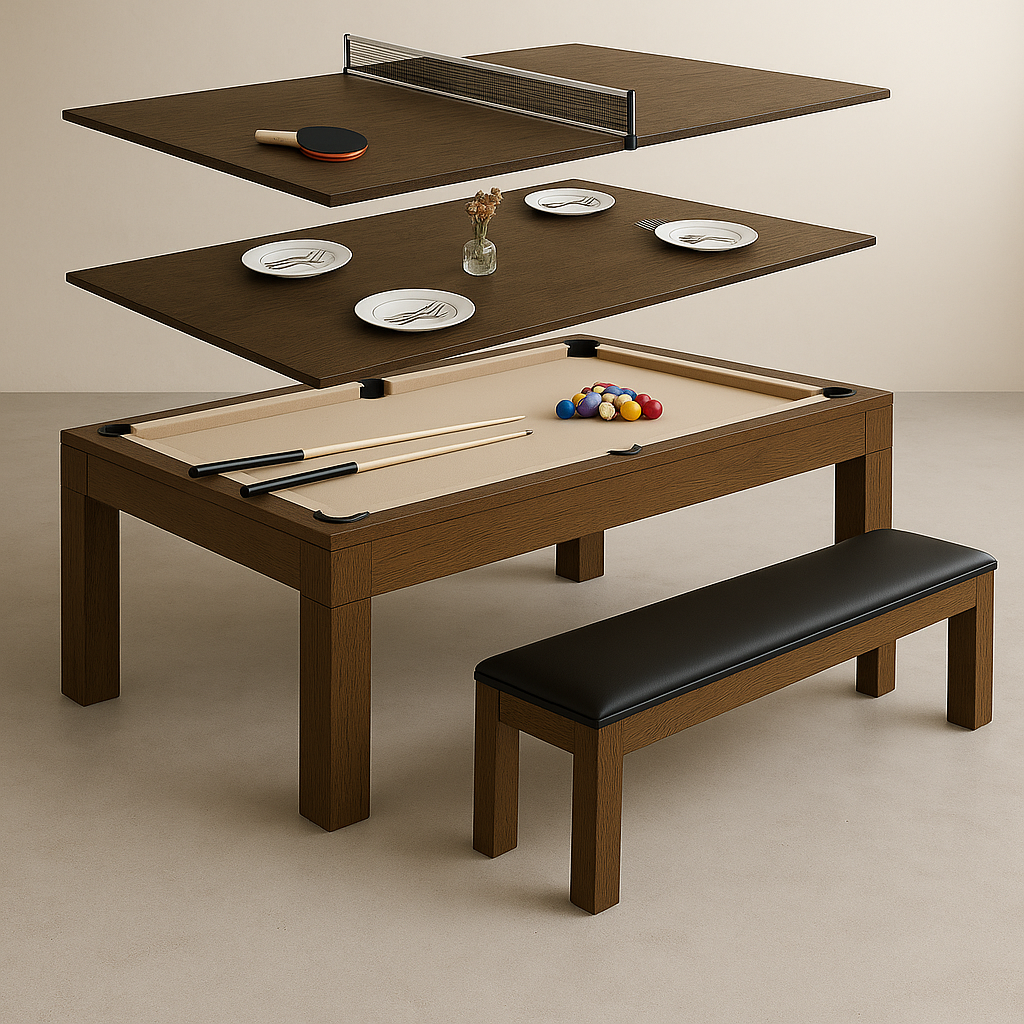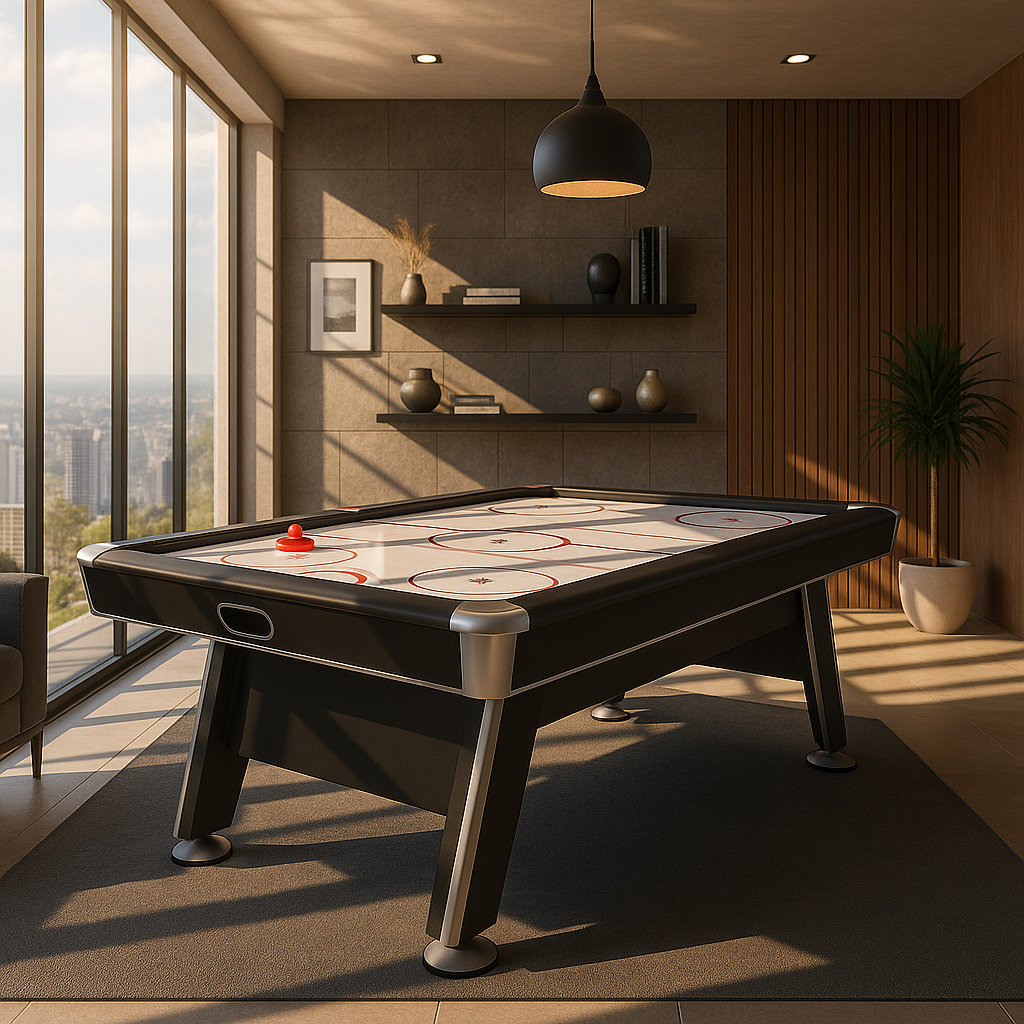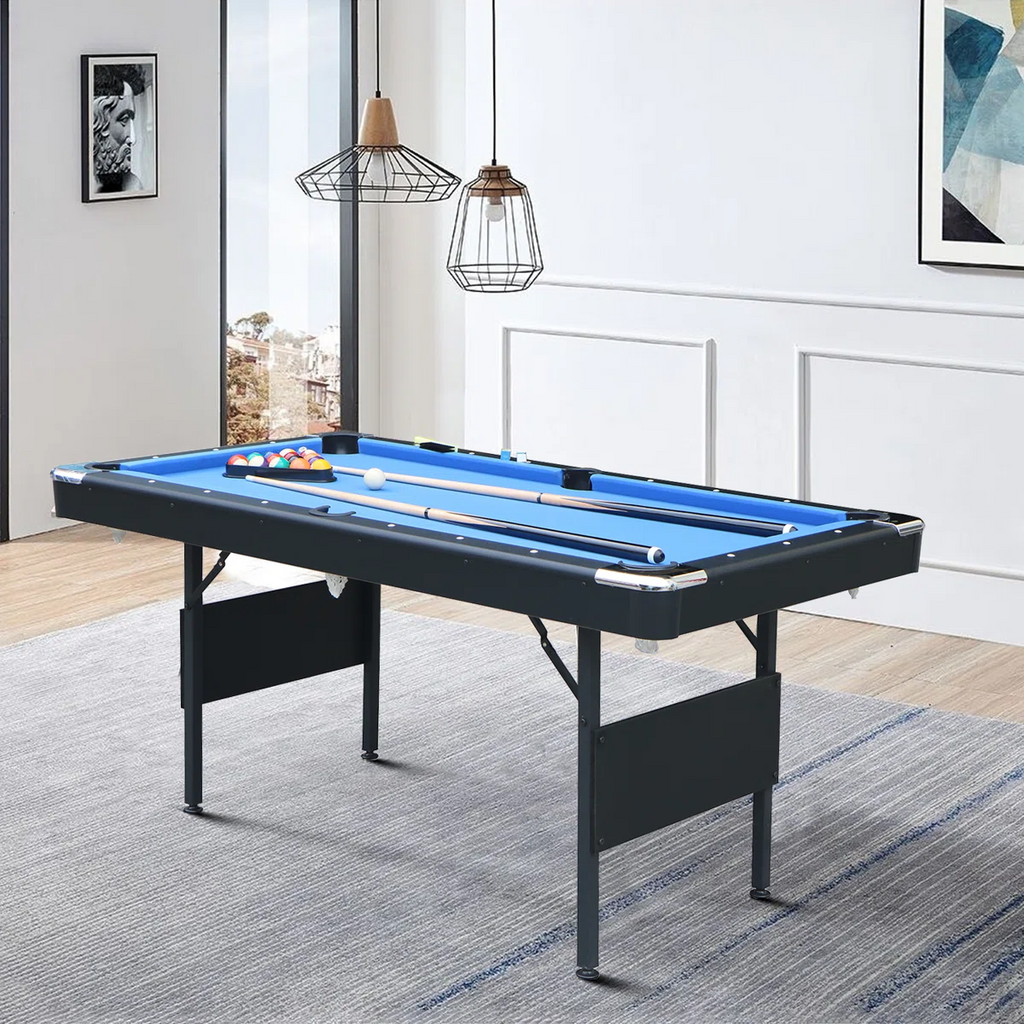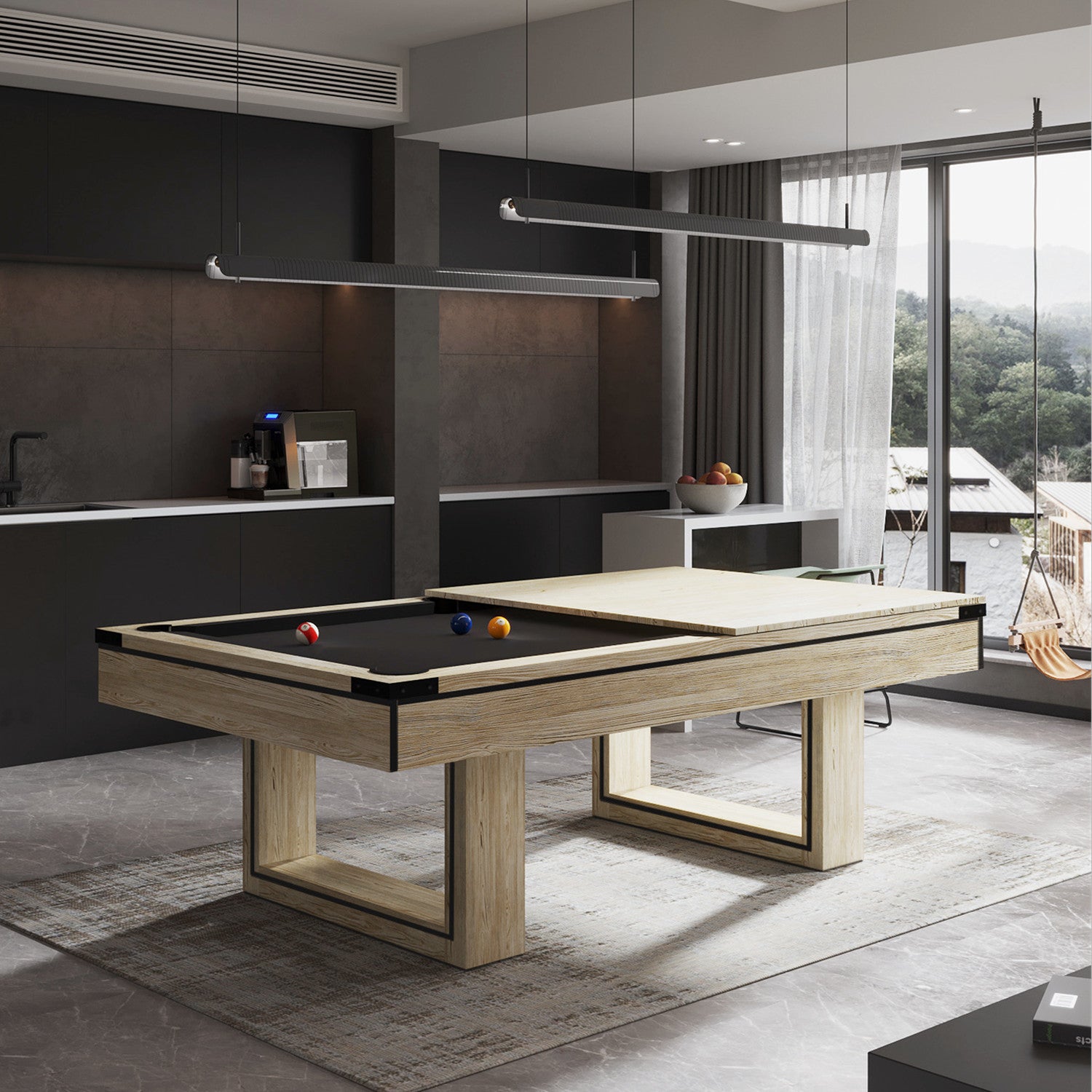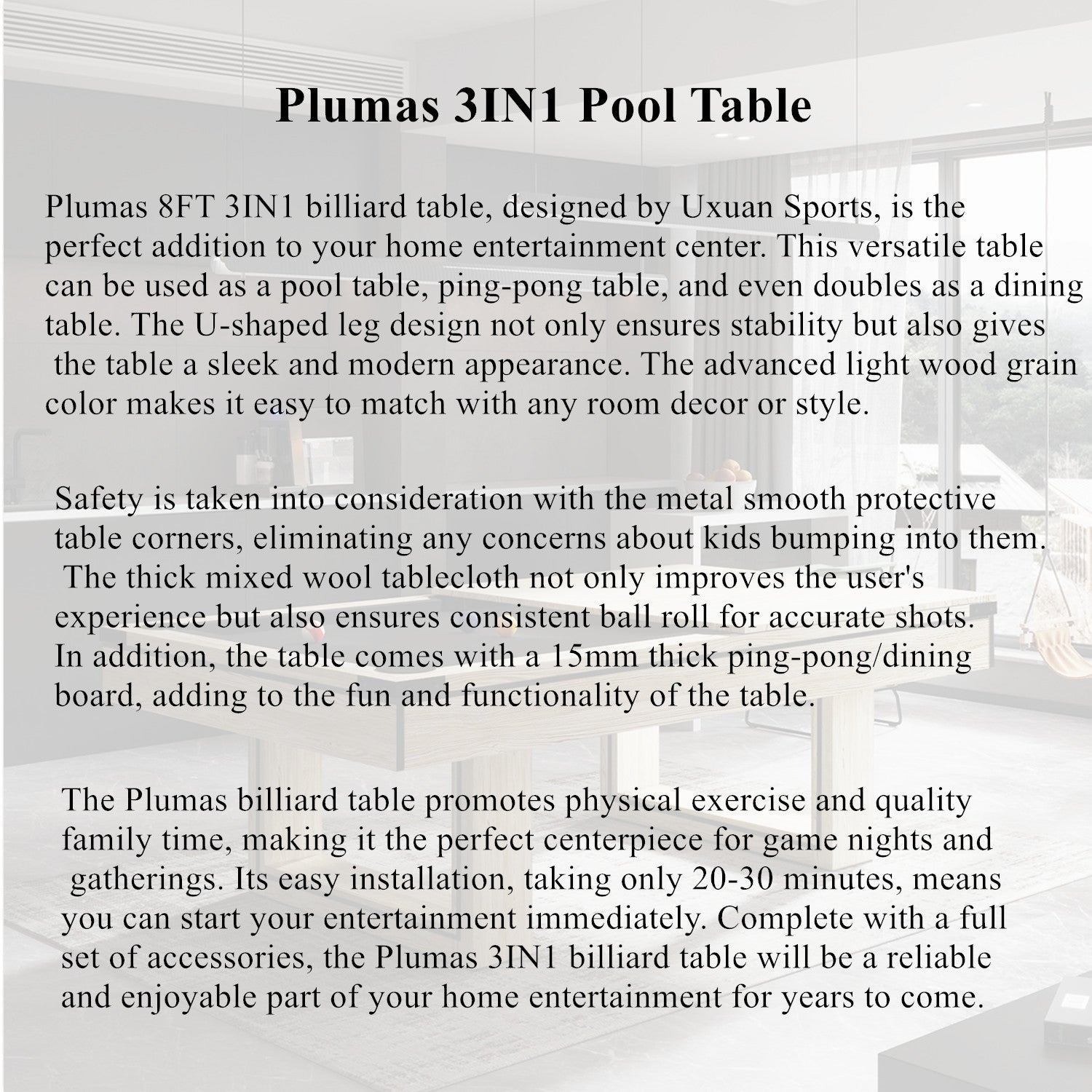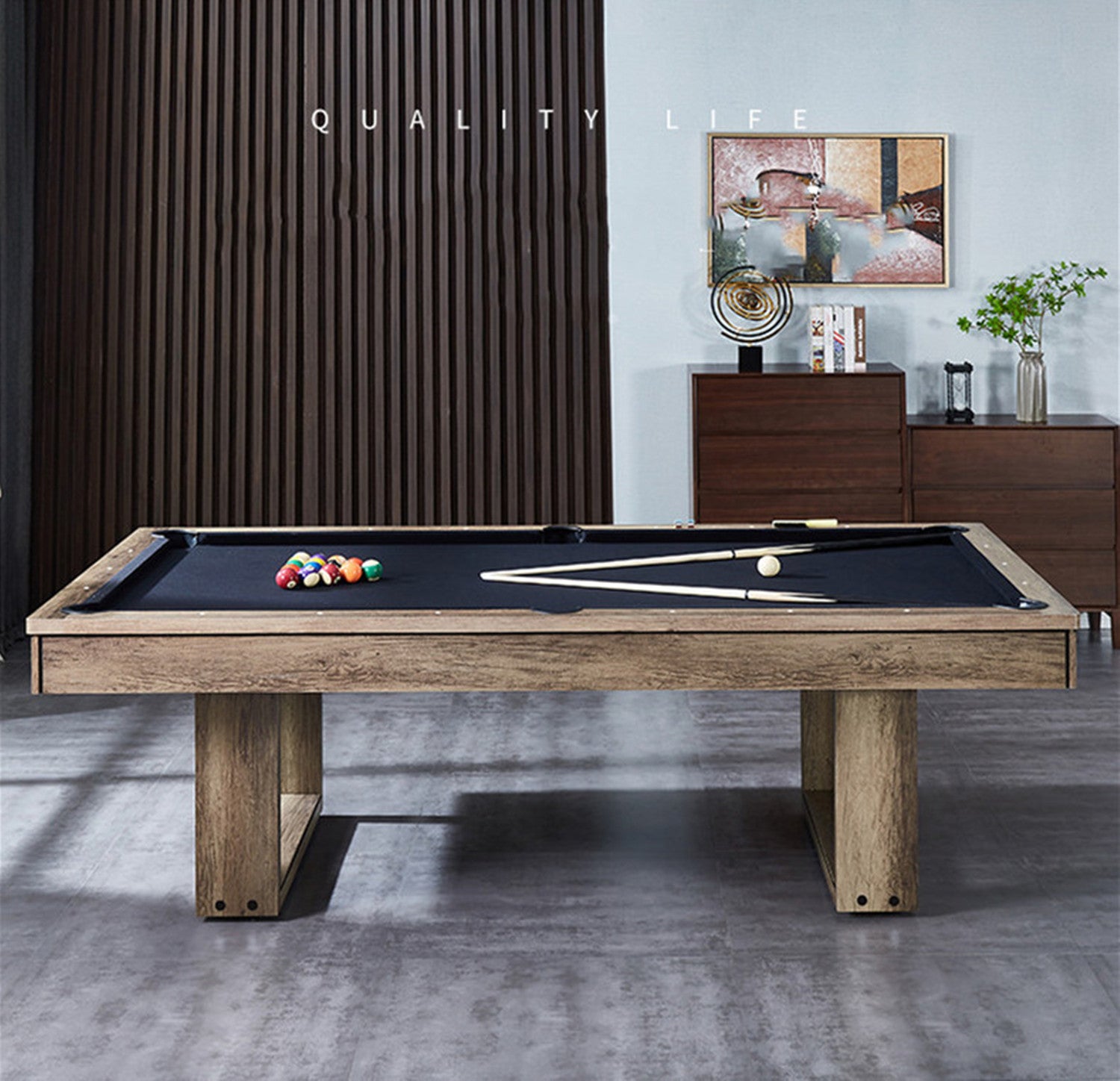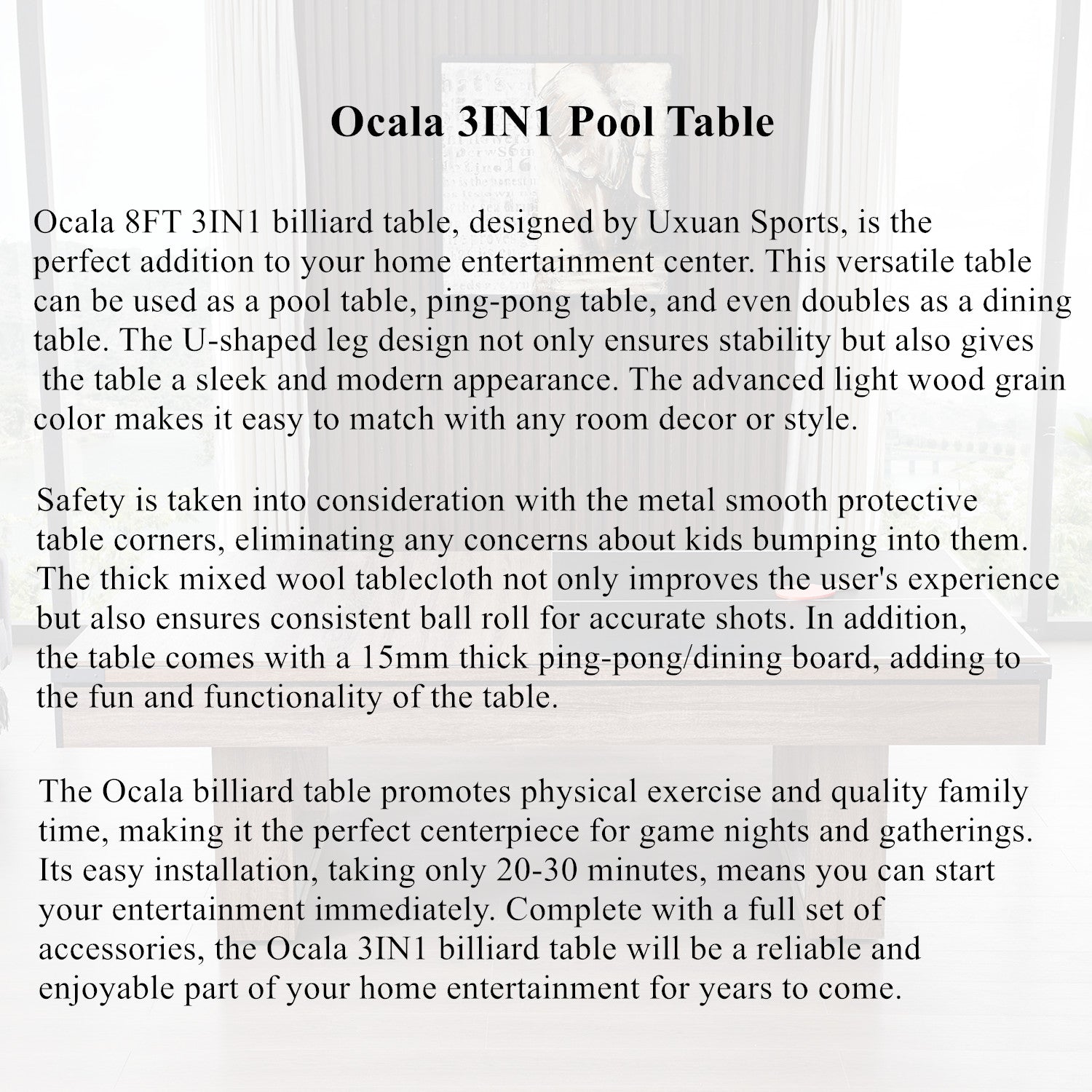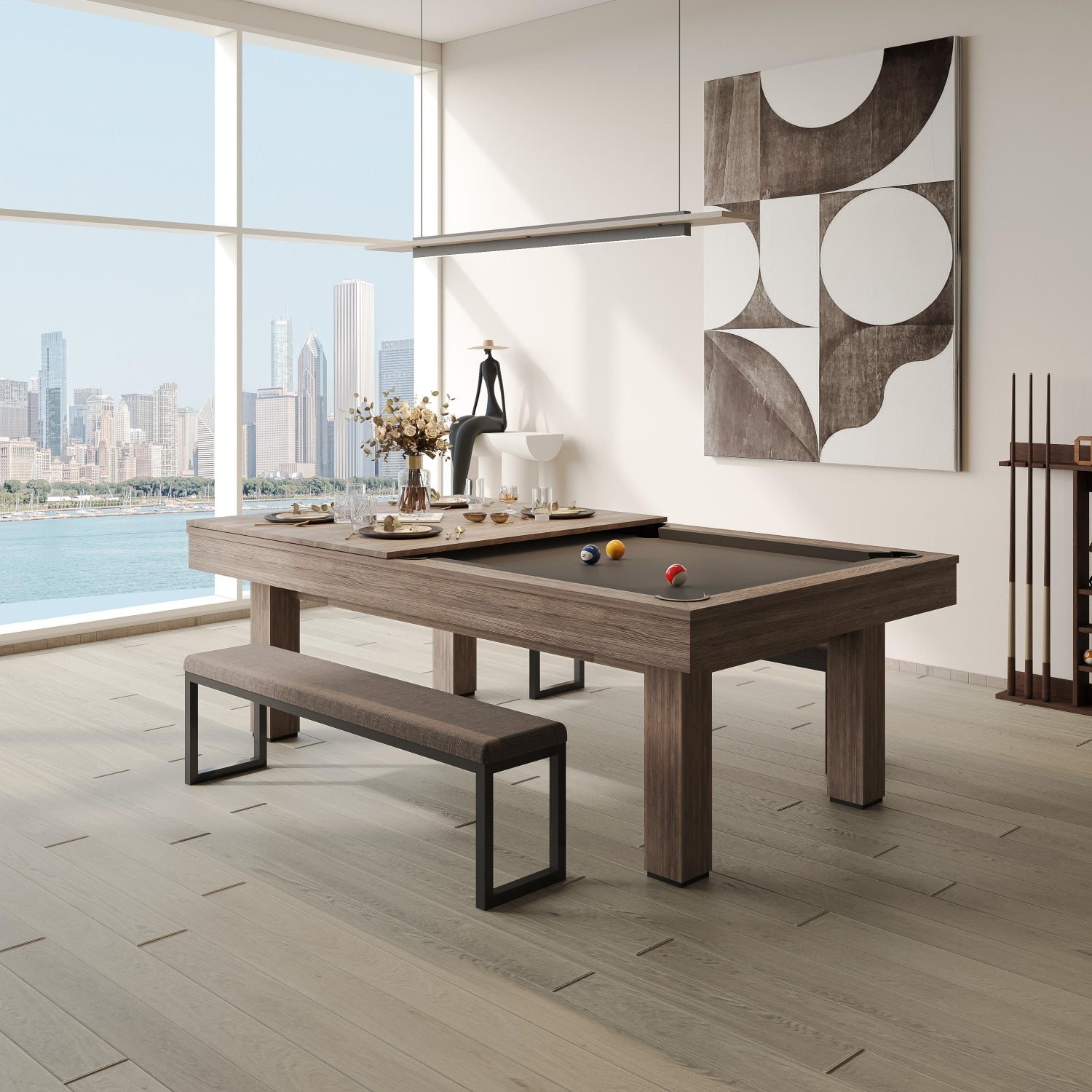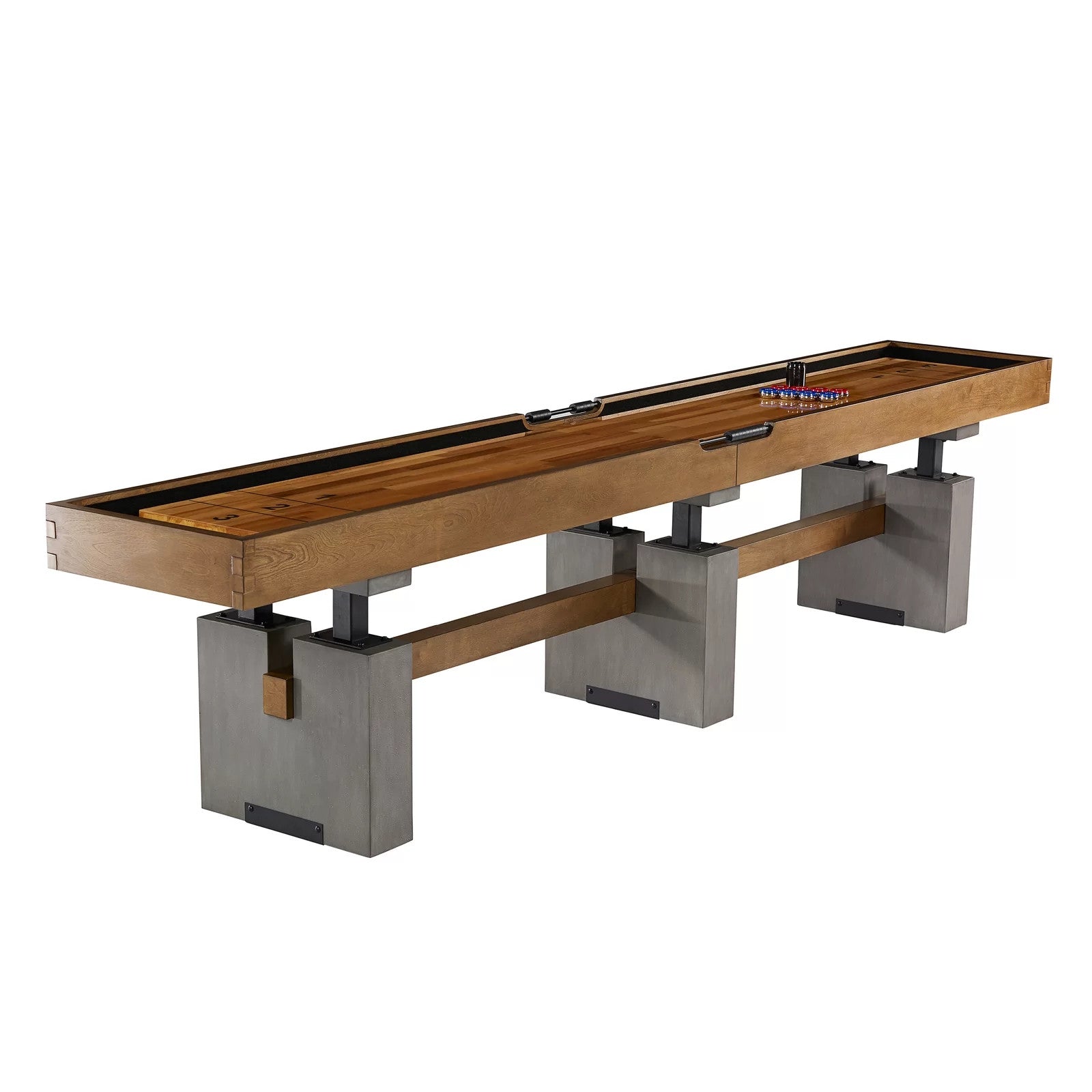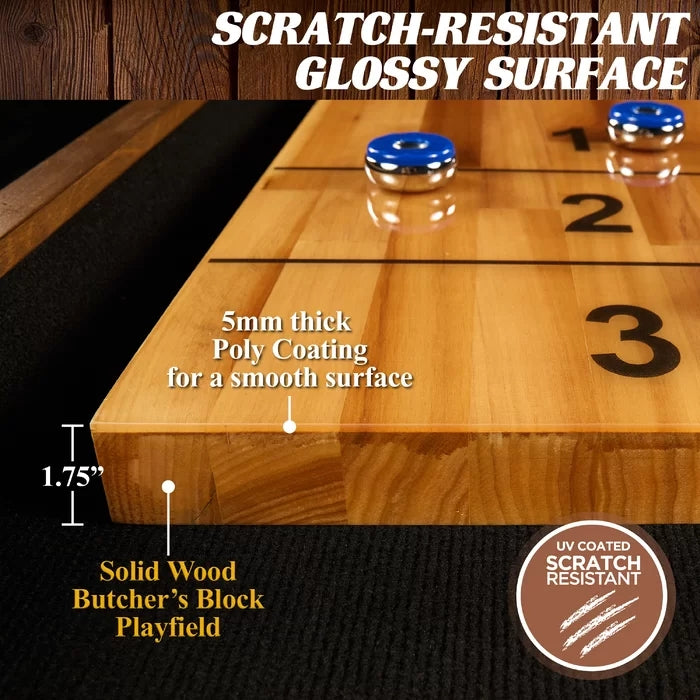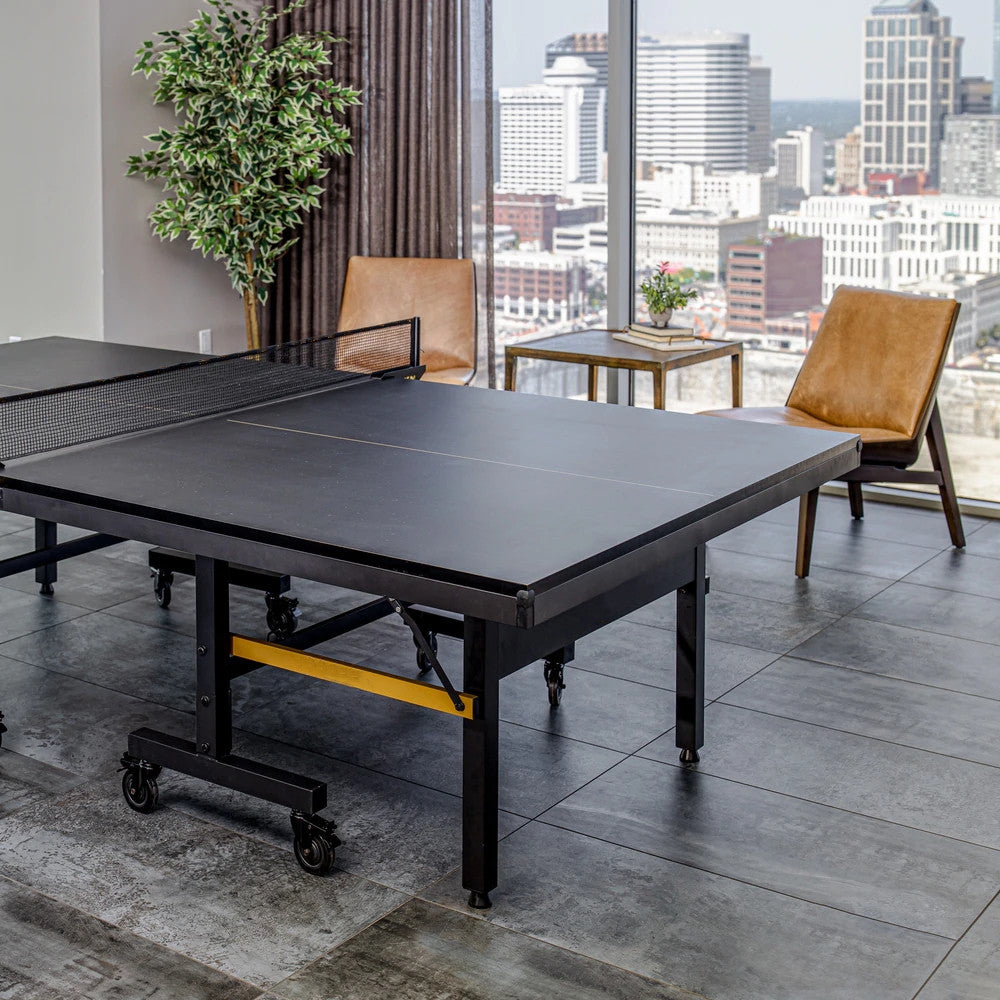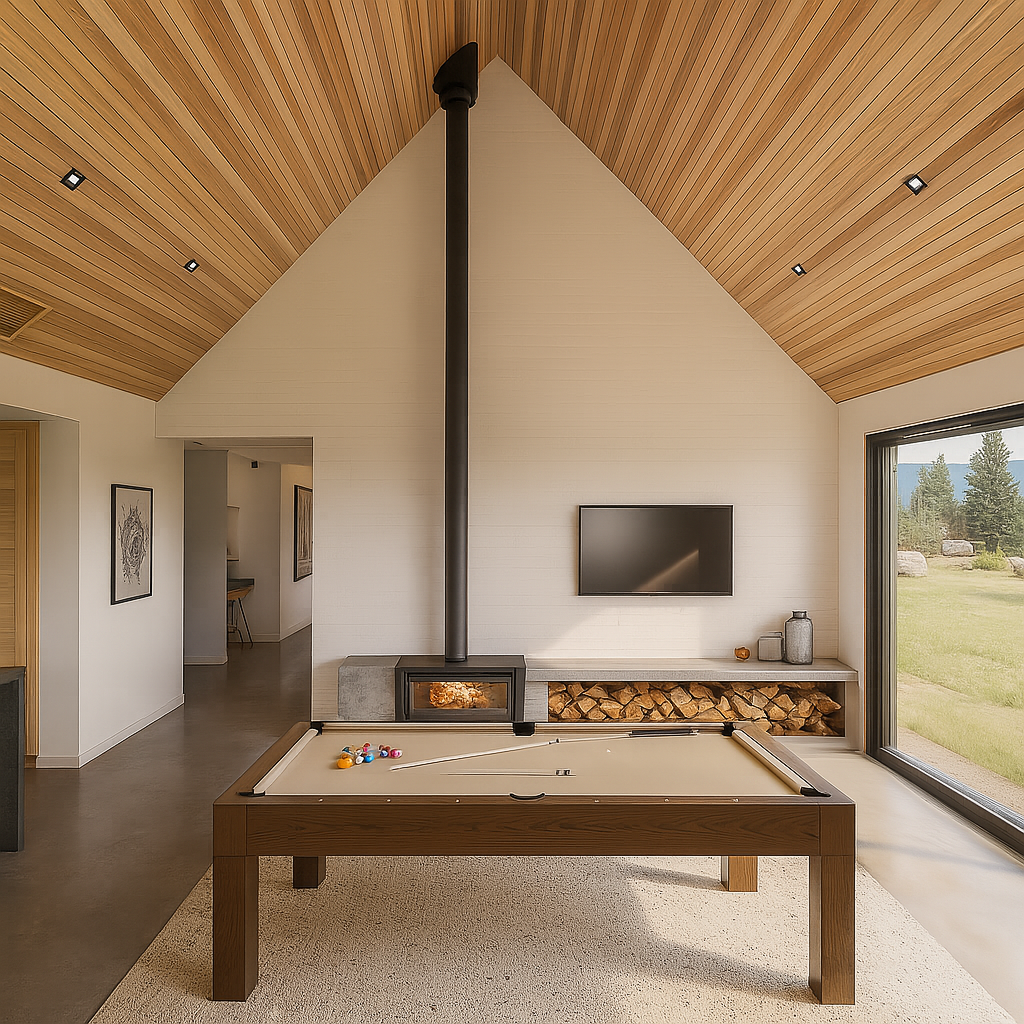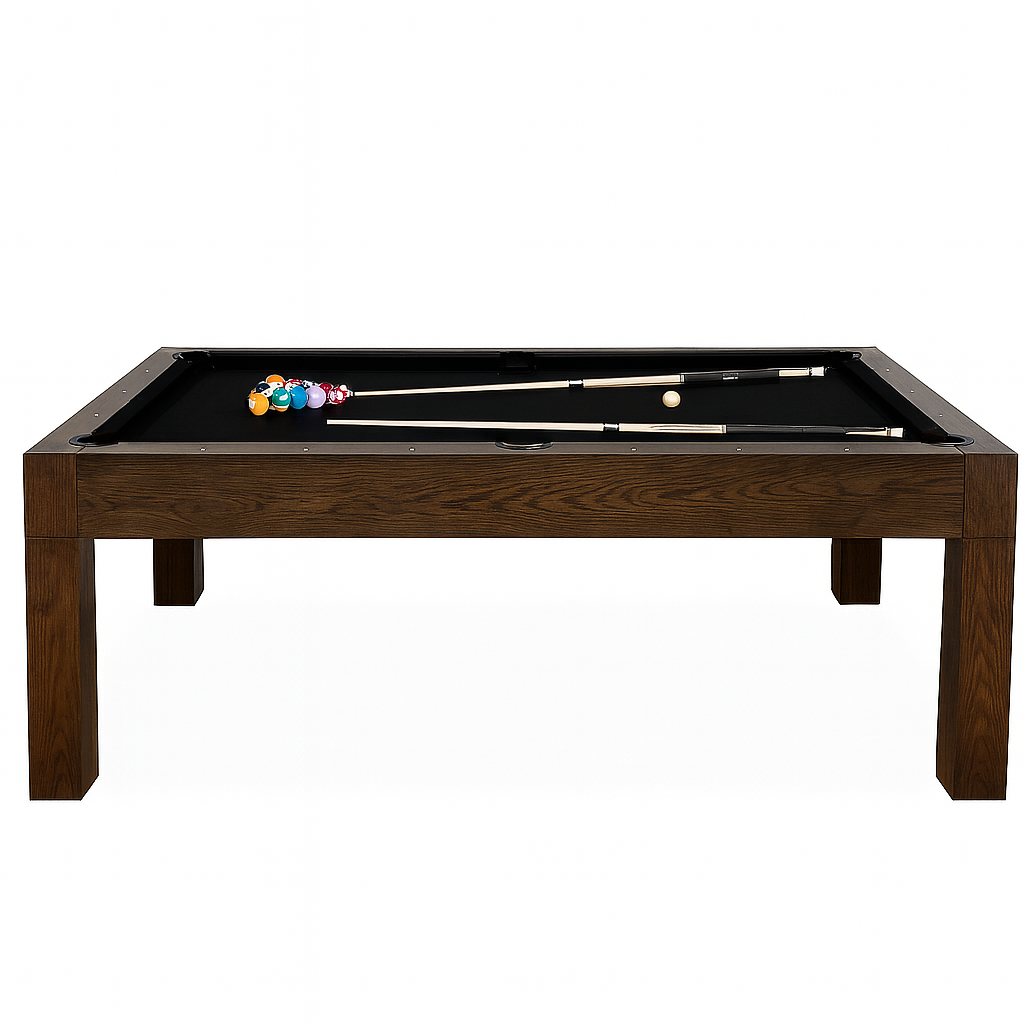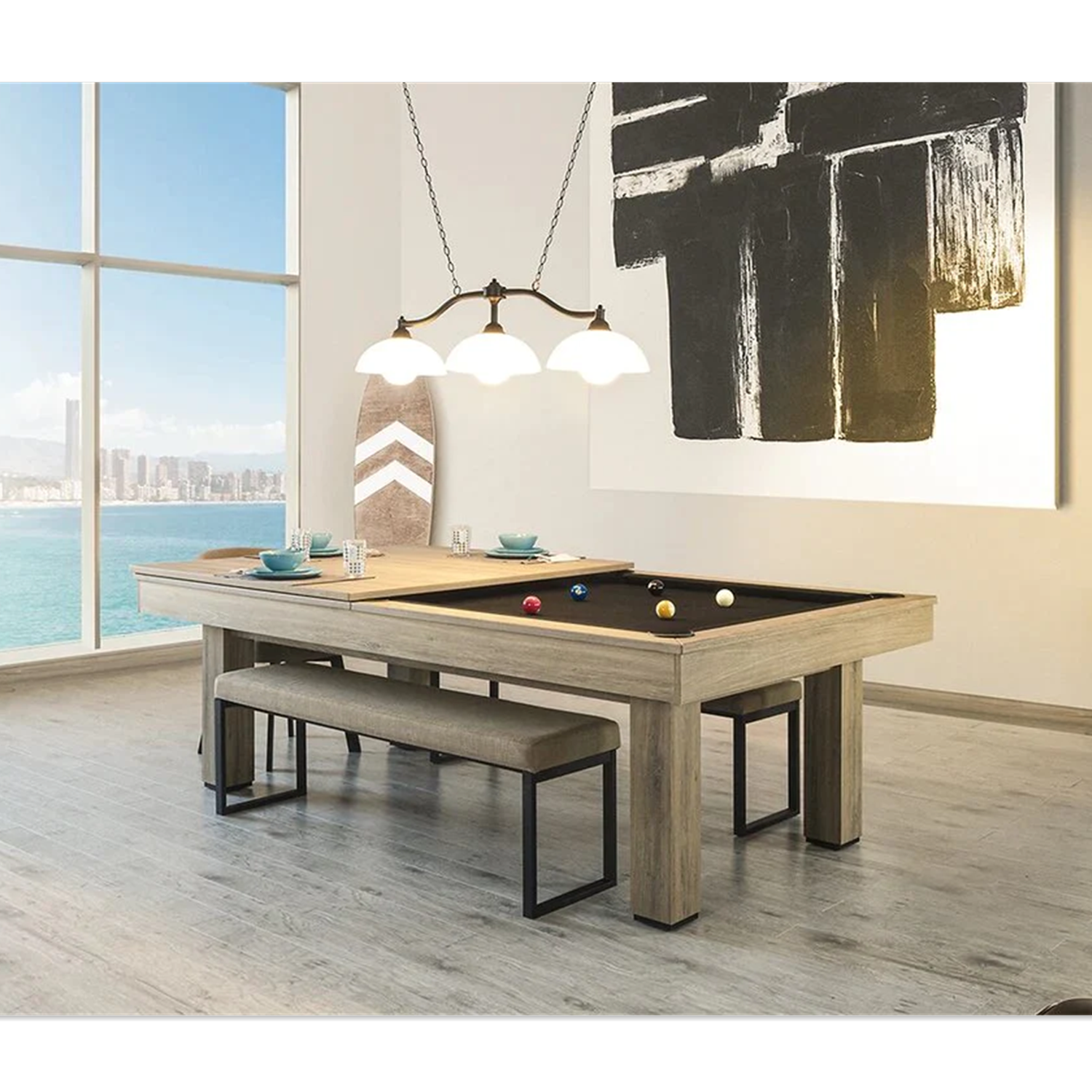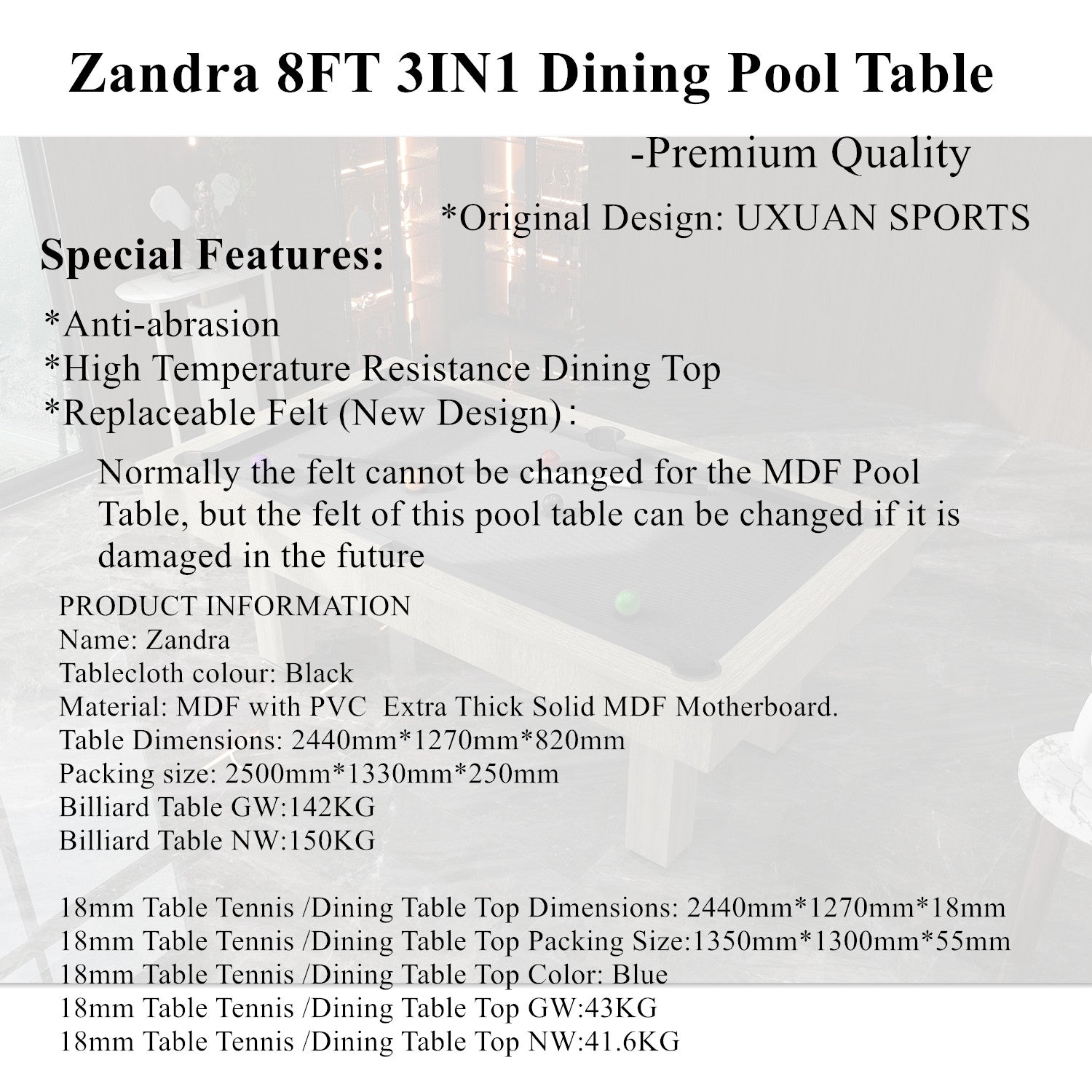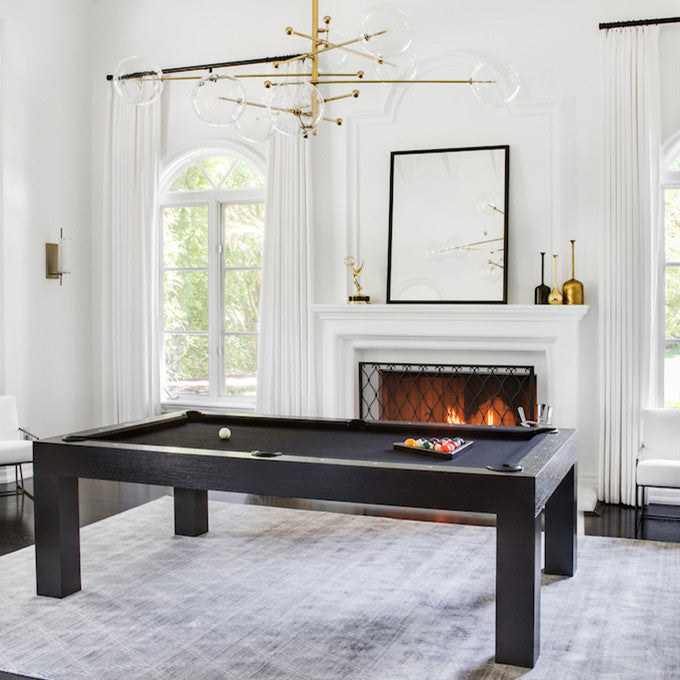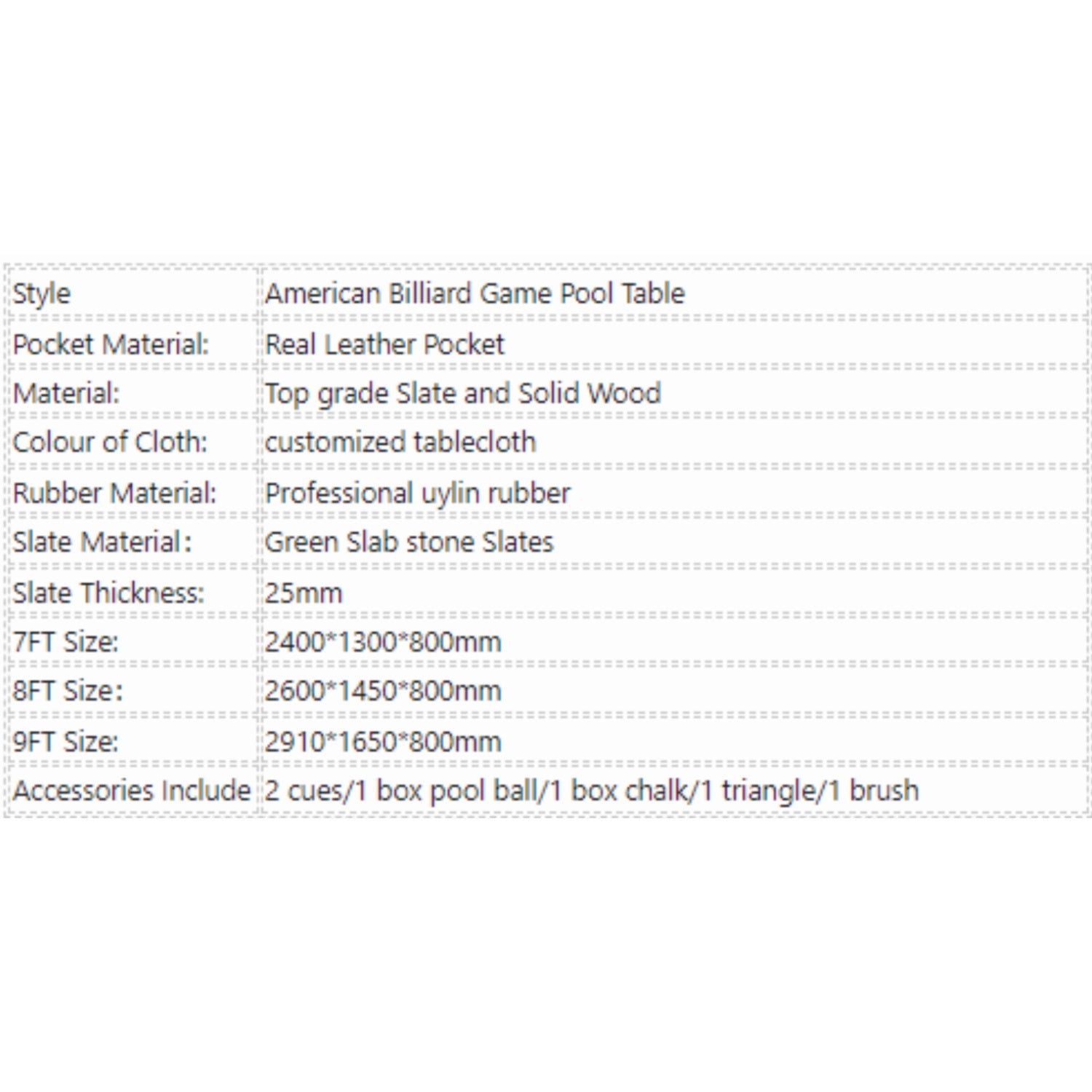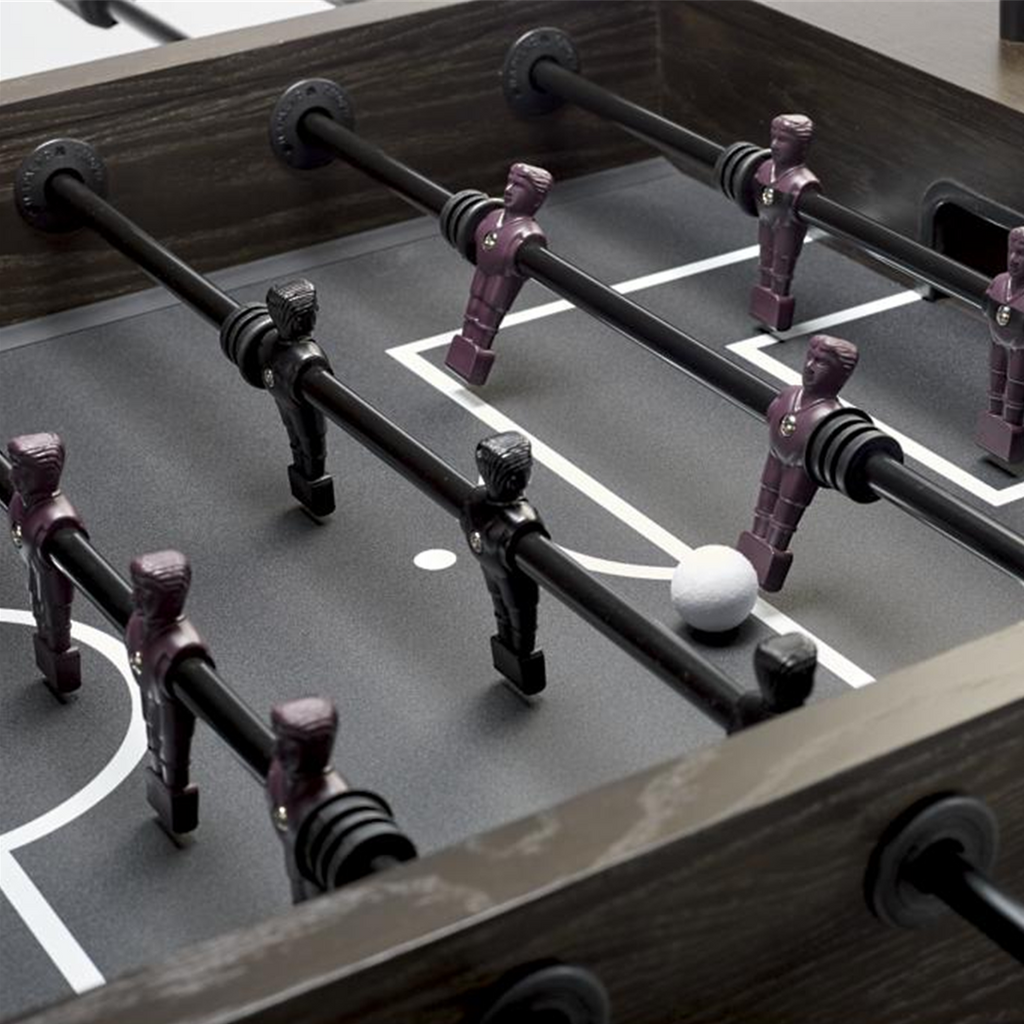
Your Complete Guide to Foosball Tables For Beginners

What Is a Foosball Table?
A foosball table (sometimes called a soccer table) is a tabletop game that captures the fast-paced excitement of football in a compact, hands-on format. Players use rods fitted with miniature figures to pass, defend, and score goals, all while trying to outmanoeuvre their opponent. It’s a fun mix of skill, reflexes, and strategy.
Foosball originated in Europe in the early 20th century, with early designs appearing in both Germany and Spain. Over time, it’s grown into a beloved pastime around the world, from casual home matches to organised tournaments.
You’ll find foosball tables in all kinds of places: family homes, pubs, office break rooms, family centres, and game rooms. It’s a social, addictive game that appeals to all ages and skill levels, which is why it remains a favourite for both fun and friendly competition.
How Big Is a Foosball Table?
Standard Size
A full-size, regulation foosball table typically measures around 140 cm long, 75 cm wide, and 90 cm high. This size offers a comfortable playing surface and enough space for intense, competitive matches. Some models may vary slightly depending on design or manufacturer, but most standard tables fall within this range. Prices depend on size, fixtures and finishes. For serious players, top of the line foosball tables are made using premium quality materials and stylish colours.
Compact & Space-Saving Options
Don’t have the room for a regulation table? No problem. There are plenty of compact or foldable foosball tables that are great for apartments, kids’ rooms, or shared spaces where flexibility matters. These smaller models may be closer to 90–120 cm long and often come with lightweight construction for easy storage.
While they’re not tournament-grade, compact tables are still loads of fun and ideal for casual games with friends or family.
How Much Space Do You Need for a Foosball Table?
Knowing the table’s dimensions is one thing, but making sure it actually fits in your space is just as important. To enjoy a proper game without feeling cramped, you’ll need to think beyond just the size of the table itself.
Foosball Table Dimensions
A full-size foosball table usually measures:
-
Length: 140–145 cm
-
Width: 70–75 cm (without rods)
-
Height: Around 88–91 cm
But don’t forget the rods, which can extend up to 30 cm on either side. That means the total width with rods in play is closer to 130–135 cm.
Space Recommendations
For a comfortable playing experience, it’s best to leave at least 90 cm of clearance on all sides. This gives players enough room to move, twist, and take their shots without bumping into furniture or walls.
As a general guide, aim for a dedicated space of around 2.5 m x 1.7 m to comfortably accommodate a standard table and two players. If you’re using a smaller or foldable table, you can scale that down, but make sure there’s still space for free movement.
How Many Players Can Use a Foosball Table?
Foosball is one of those rare games that’s just as enjoyable one-on-one as it is with a group. Most tables are designed for either 1v1 (singles) or 2v2 (doubles) gameplay, making it incredibly flexible for different settings and group sizes.
In singles matches, each player controls all four rods on their side: defence, midfield, and attack. It’s fast, intense, and a great test of coordination. In doubles, teammates split the responsibilities. One handles defence and the goalie, while the other focuses on midfield and attack. This format brings in a fun social element, perfect for parties, family nights, or casual tournaments.
Some larger tables can accommodate more players for novelty or team events, but 2v2 remains the standard for most foosball games. Whether you're competing seriously or just having a laugh, it’s the kind of game that brings people together and keeps them coming back for rematches.
How Do You Set Up a Foosball Table?
Setting up a foosball table is more straightforward than many people expect. Most tables arrive partially assembled, with the base structure already in place. What you’ll typically need to do is attach the legs, install the rods and players, and then secure the playing surface and goals.
Assembly Tips
-
Read the manual first. It sounds obvious, but each model has its own quirks.
-
Lay out all parts before starting, and check you have everything listed.
-
Work on a flat surface to ensure the table stays level during assembly.
-
Use a spirit level once the table is upright to make sure gameplay is even on both sides.
Once it’s fully assembled, double-check that all rods move smoothly and that the playing surface is free from any debris or packaging remnants. If your model includes adjustable feet, take a moment to balance it properly so the ball doesn’t roll unfairly in one direction.
If you need extra help, U-xuan provides setup support for many of their tables, including manuals and tips. You can always check your specific model’s listing for more info.
Foosball Rules: How to Play for Beginners
You don’t need to be a seasoned pro to enjoy a good game of foosball. It’s easy to learn and quick to set up. Whether you’re setting up your first table at home or jumping into a quick match at the office, the basics are simple and fun to pick up.
The Objective
The goal is straightforward: be the first to score a set number of goals, typically 5 or 10. You control your team of miniature players using rods, trying to pass, block, and shoot the ball into your opponent’s goal.
The Rods
There are four rods per player on a standard table:
-
Goalie rod (1 player)
-
Defender rod (2 players)
-
Midfield rod (5 players)
-
Attacker rod (3 players)
Players twist and push or pull the rods to move their figures and control the ball.
Basic Rules
-
No spinning allowed. Spinning, where a player turns the rod 360 degrees without control, is usually considered a foul.
-
Serve from the centre. The game begins by serving the ball through a hole in the side of the table or placing it at the centre.
-
Switch serve after each goal. The losing side of the last point gets to serve next.
-
Dead balls are re-served. If the ball stops in a place neither team can reach, it's re-served from the nearest spot.
These simple rules make foosball fast-paced, competitive, and incredibly addictive, especially once you start developing a few signature moves or team strategies.
Ready to Try Foosball?
Whether you're creating the ultimate game room, looking for a way to bring people together, or just want a fun and competitive pastime, a foosball table is a brilliant addition to any space. From compact designs for casual players to regulation-size tables for more serious matchups, there's a perfect fit for every home, office, or social setting.
If you’re ready to get started, explore our extensive range of foosball tables built for both fun and function. Designed for durability and great gameplay, U-xuan’s range includes something for every skill level and space.
Foosball Table FAQs
What is a foosball table used for?
A foosball table is used to play a tabletop version of football (or soccer), where players control miniature figures on rods to pass, block, and score goals. It’s great for fun, friendly competition in homes, offices, and social spaces.
How big are foosball tables?
Standard foosball tables are around 140 cm long, 75 cm wide, and 90 cm high. Compact and foldable versions are also available for smaller spaces.
How do you set up a foosball table?
Most foosball tables come partially assembled. You’ll typically need to attach the legs, insert the rods and players, and level the table before play. Always follow the manufacturer’s instructions for best results.
How many players can play on a foosball table?
A foosball table usually supports 1v1 (singles) or 2v2 (doubles). Some larger or custom tables may allow more players, but 2v2 is the standard for most models.
What are the official dimensions of a foosball table?
Regulation-size foosball tables are generally 140 to 145 cm long, 70 to 75 cm wide (excluding rods), and about 90 cm high. Be sure to leave extra room around the table for rods and player movement.

